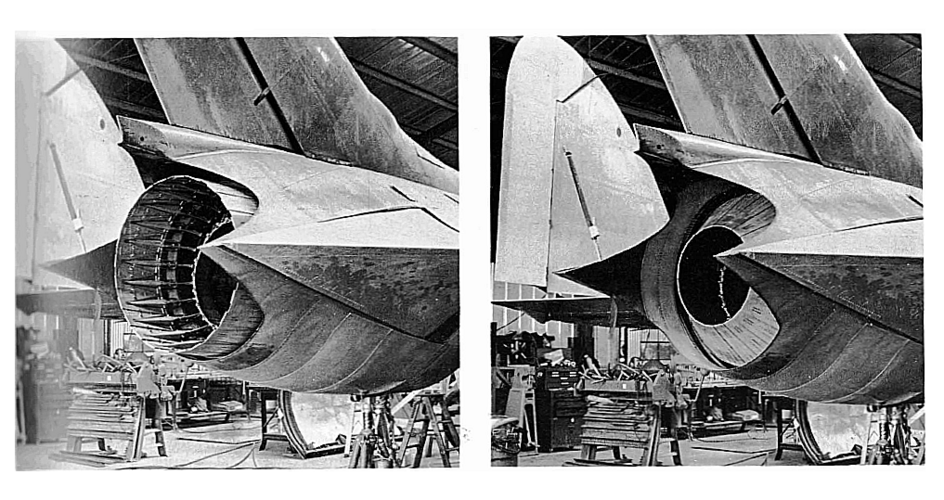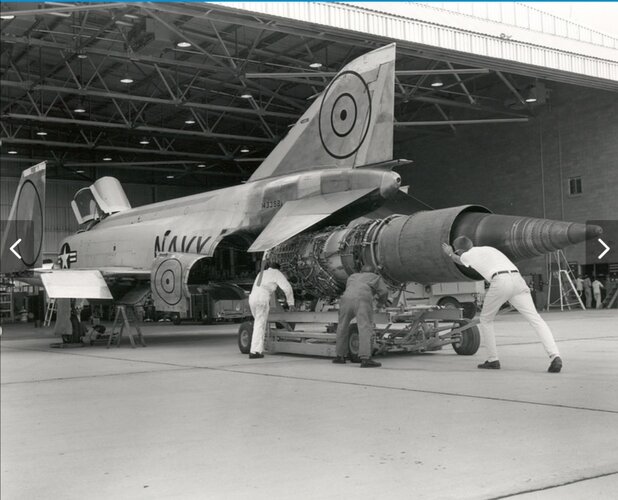F4D-1 (F-6A) max speed @ sea level = 722 mph (M1 = 761 mph)
F4D-1 (F-6A) max speed @ 36,000 ft = 695 mph (M1= 660.5 mph)
39 mph below M1 @ sea level, 34.5 mph above @ 36,000ft with the afterburning J57-P-8 (10,200 lb.s.t. mil, 16,000 lb.s.t. afterburning).
For comparison:
The FJ-4 Fury could do 680 mph @ sea level, 631 mph @ 35,000 ft (42-64 mph less than the F4D at both altitudes with the non afterburning J65-W-16 [7,700 lb.s.t. mil]).
The F11F-1 (F-11A) Tiger could do 753 mph @ sea level, 727 mph @ 35,000 ft (31-32 mph more than the F4D at both altitudes with the afterburning J65-W-18 [7,400 lb.s.t. mil, 10,500 lb.s.t afterburning]).
Yes, the F11F-1 was faster with only 72.5% (mil) and 65.6% (a/b) of the thrust.
The F11F-1F Super Tiger hit 836 mph @ sea level, 1,325 mph @ 35,000 ft, and 1,400 mph @ 40,000 ft with a J79-GE-3 (9,600 lb.s.t. mil, 14,800 lb.s.t. afterburning).
Still less power than the F4D and just over twice the speed at 35,000 ft!
Yeah, the F4D wasn't great aerodynamically.
The F5D was planned for the "available in 1957" J57-P-14 (10,700 lb.s.t. mil, 16,900 lb.s.t. afterburning).
The F-102A, in 1955, had the J57-P-25 (11,700 lb.s.t. mil, 17,200 lb.s.t. afterburning).
The F8U-2 (F-8D) in 1960 had the J57-P-20 (10,700 lb.s.t. mil, 18,000 lb.s.t. afterburning).
And by 1965 the RF-8G had the J57-P-420 (11,650 lb.s.t. mil, 19,600 lb.s.t. afterburning).
The J79-GE-10 of the F-4E & F-104S, in 1966, produced 11,430 lb.s.t. mil & 17,860 lb.s.t. - less than the contemporary J57-P-420, but smaller and lighter.
Only with the J79-GE-119 of 1980 (for the F-16/79) did the J79 finally exceed the power of the strongest J57 - by producing 12,050 lb.s.t. mil & 18,725 lb.s.t. afterburning [@ sea level, 20,840 lb.s.t. @ 35,000 ft and M2]).



